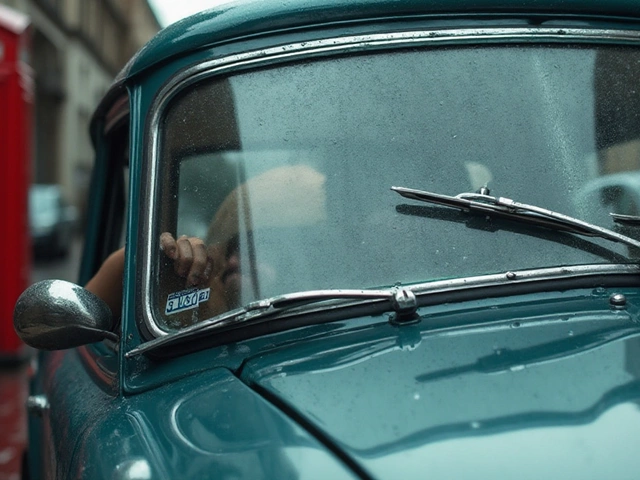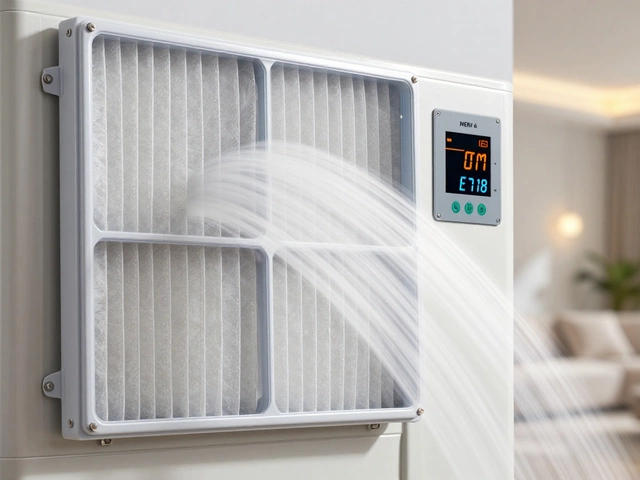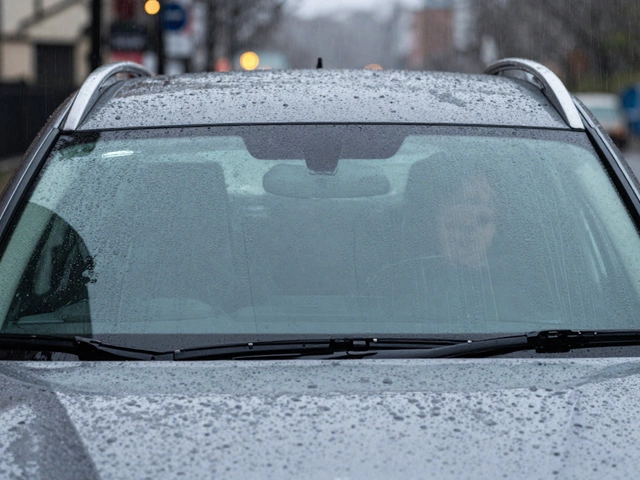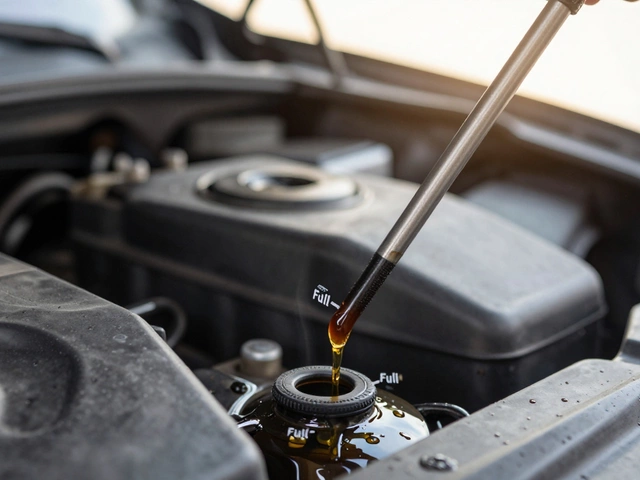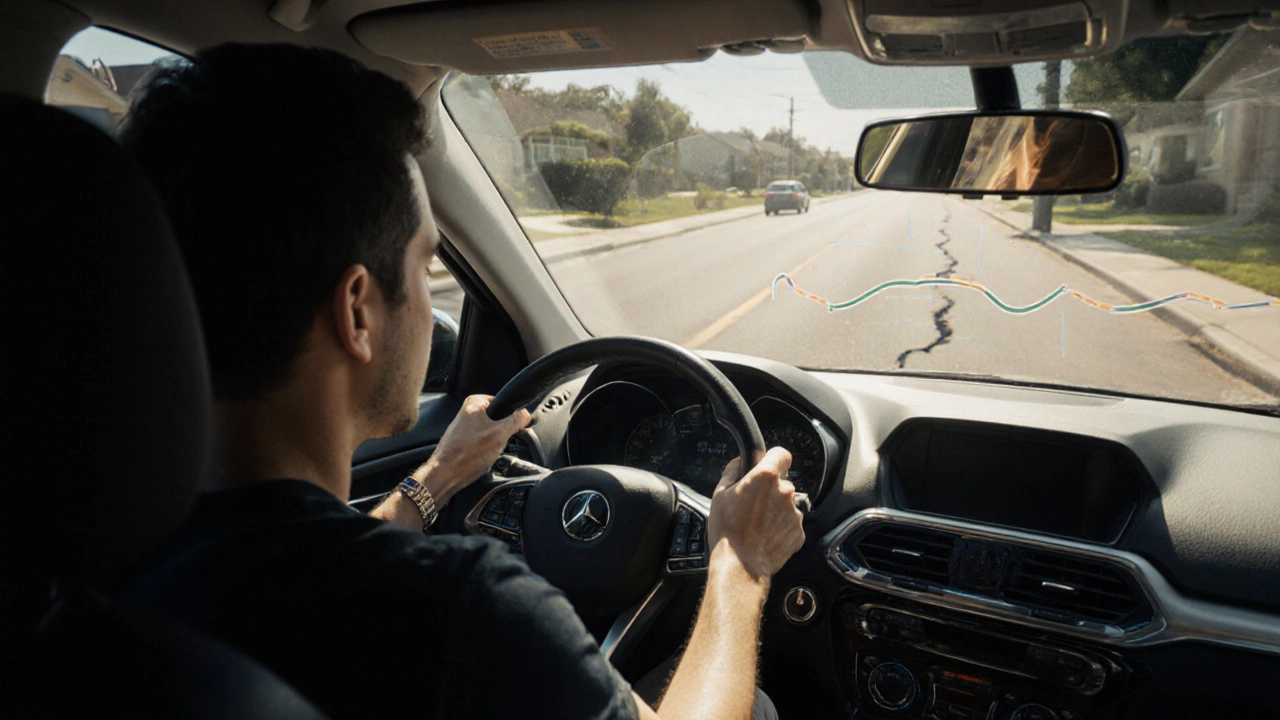
Suspension Noise Diagnostic Tool
Suspension Noise Diagnostic Tool
Select the noise you're hearing to identify likely causes and next steps
Ever heard a mysterious thump every time you hit a bump and wondered if your car is about to fall apart? That broken suspension sound could be the first warning sign that something in your Suspension system is out of sync. Listening to what your ride says is a cheap, instant diagnostic tool - you just need to know what the noises mean.
Why suspension noises matter
The suspension isn’t just a collection of metal bars; it’s the link between the road and the cabin. When a component wears, loosens, or breaks, it changes the way forces travel through the system, and the change manifests as noise. Those sounds are not random - they follow patterns that point straight to the culprit.
Common broken suspension sounds and their likely culprits
Below is a quick “sound‑to‑symptom” guide. If you can match the noise you hear to one of these, you’ve already narrowed the repair down to a single part or area.
- Clunk or bang when going over bumps - usually a sign of a worn Control arm bushing or a cracked Ball joint. The joint can’t hold the arm steady, so the metal hits the chassis.
- Squeaking during tight turns - most often caused by dry or damaged Sway bar bushings. The rubber loses its elasticity, creating a high‑pitched squeal when it twists.
- Rattling at low speeds - typically a loose Strut mount or worn Coil spring. The mount lets the strut vibrate against the chassis.
- Grinding when cornering - a dead giveaway for a failing Wheel bearing. The metal bearings lose their grease and start grinding against the hub.
- Knocking while accelerating or decelerating - often a broken or leaking Shock absorber. The piston’s internal seals fail, letting oil bypass, which makes the absorber thump.
- Thumping on rough roads - can point to a deteriorated Mounting bolt or a cracked chassis reinforcement. The bolt loosens and lets the suspension pound the body.
Where to listen and when the noise shows up
Pinpointing the source is easier when you know the driving condition that triggers the sound. Here’s a quick matrix you can run in your head while on the road:
- Drive over a speed bump at low speed. If you hear a deep clunk, suspect control arms or ball joints.
- Take a tight U‑turn at a parking lot. High‑pitched squeak? Check sway bar bushings.
- Accelerate slowly on a rough surface. A thump every 2‑3 seconds points to shock absorbers or struts.
- Maintain a steady 30 mph on a smooth highway. Any grinding that fades in as you pass a curve suggests wheel bearings.
Quick driver’s checklist
Before you book a garage appointment, run through this 5‑step sanity check. It only takes a few minutes and can save you a trip.
- Open the hood and visually inspect all suspension bolts - look for missing nuts or rust.
- Push down on the front and rear corners of the car. Excessive bounce means the shocks or struts are weak.
- Listen with the engine off. Grab the wheel at the 12 o’clock position and wiggle it left‑right. Any play points to ball joints or tie‑rod ends.
- Roll the car slowly while turning the steering wheel fully left and right. Note any squeal or grinding.
- Check tire wear patterns after a week of normal driving. Uneven wear can hint at misaligned or broken control arms.
When to see a mechanic
If you’ve identified a likely component but lack the tools to replace it, it’s time for a professional. Also, call a garage right away if you notice any of these red flags:
- Loss of steering control or a wobble at speeds above 50 mph.
- Visible fluid leaking from shock absorbers.
- Noise that gets louder every time you drive over a bump.
- Suspension sag on one side of the vehicle.
Ignoring these can lead to tire damage, wheel mis‑alignment, or even a total loss of control.
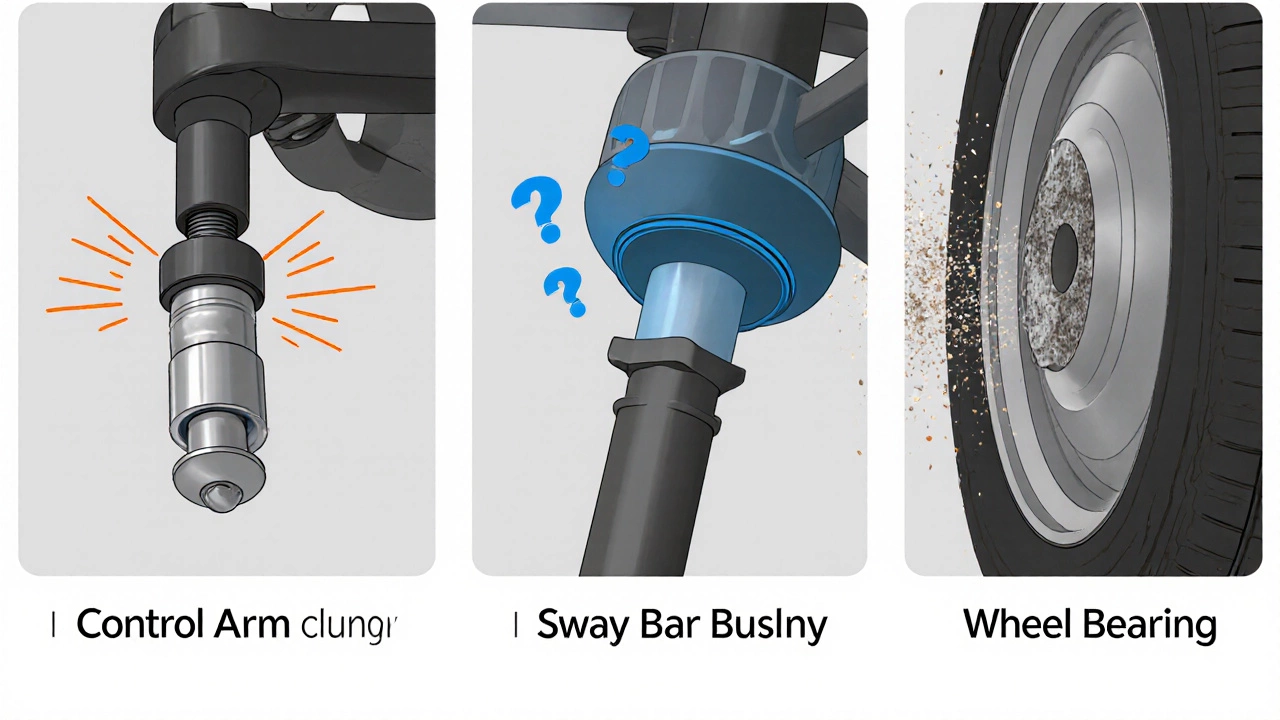
DIY fixes and cost hints
Some suspension noises are easy fixes you can do with basic hand tools. Others require specialist equipment.
| Noise | Typical DIY Fix | Estimated DIY Cost | Professional Service Cost |
|---|---|---|---|
| Clunk over bumps | Replace control‑arm bushing | £30‑£45 (bushing kit) | £120‑£180 (incl. labour) |
| Squeak in turns | Lubricate or replace sway‑bar bushing | £20‑£35 | £80‑£130 |
| Rattle at low speed | Torque strut mounts, replace worn coil spring | £50‑£90 | £150‑£250 |
| Grinding while cornering | Replace wheel bearing (requires hub press) | £70‑£120 (if you have a press) | £200‑£300 |
| Knocking on acceleration | Swap out leaked shock absorber | £45‑£70 each | £130‑£190 each |
These figures are averages for the UK market in 2025 and can vary based on make, model, and local labour rates. If you’re not comfortable with a press or torque‑spec tools, it’s safer to let a garage handle the job.
Rule‑of‑thumb: when a noise is a deal‑breaker
Think of your car’s suspension like a drum set. A tiny rattle is annoying, but a cracked drumhead can ruin the whole performance. Use this quick test: if the noise makes you glance at the road more than the scenery, treat it as a deal‑breaker and get it inspected within 48 hours.
Bottom line
Every unfamiliar sound is a clue. By matching the pitch, timing, and driving condition to the checklist above, you can often tell whether you’re looking at a simple bushing swap or a major shock absorber overhaul. Keep a notebook, note the conditions, and you’ll save time, money, and more importantly, stay safe on the road.
What does a clunking sound mean?
A clunk usually points to a loose or worn control‑arm bushing, ball joint, or tie‑rod end. The metal parts hit each other when the wheel moves over a bump.
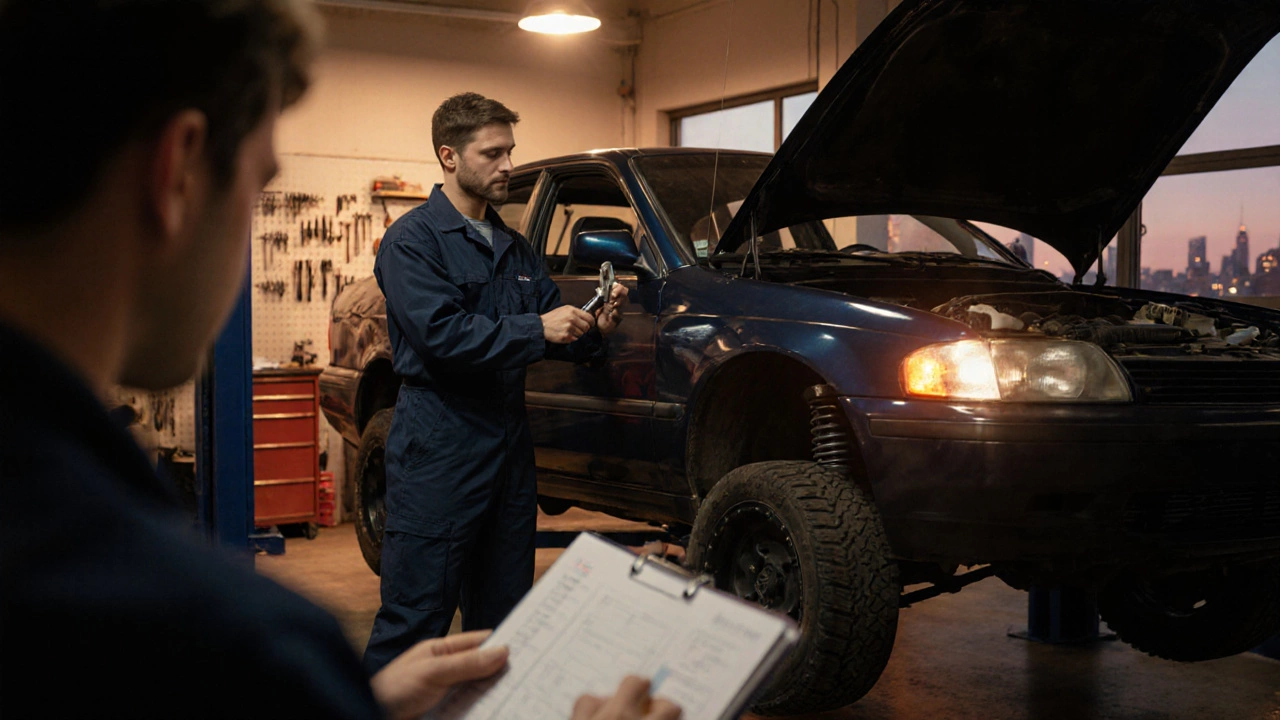
How can I tell if my sway bar bushings need replacement?
If you hear a high‑pitched squeak when you turn the steering wheel sharply, especially at low speeds, the sway bar bushings are likely dry or cracked.
Is a rattling noise always a sign of a bad strut?
Not always. Rattling can also come from a loose strut mount, a broken coil spring, or even a loose mounting bolt. Check the mount first, then inspect the spring.
When should I replace a shock absorber versus just rebuilding it?
Modern shocks are sealed units; rebuilding isn’t practical. If the absorber leaks oil, makes a knocking sound, or the car bounces more than two times after a shove, replace it.
Can I drive safely with a grinding wheel bearing?
No. A grinding bearing means metal‑to‑metal contact that can seize quickly. Drive no more than a few miles to the nearest garage.

